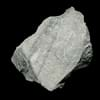Definition
Marble is a non-foliated metamorphic rock which is composed of recrystallized carbonate which is formed when limestone is exposed to high temperatures and pressures over a long time
Anthracite is a type of sedimentary rock which is hard and is variety of coal that has high luster
Origin
Egypt
Pennsylvania, U.S.
Discoverer
Unknown
Unknown
Etymology
From the Greek marmaros, shining stone and also from the English word marmoreal meaning marble-like
From Greek anthrakites, from anthrax, anthrak meaning coal
Class
Metamorphic Rocks
Metamorphic Rocks
Sub-Class
Durable Rock, Medium Hardness Rock
Durable Rock, Soft Rock
Group
Not Applicable
Not Applicable
Other Categories
Medium Grained Rock, Opaque Rock
Coarse Grained Rock, Fine Grained Rock, Medium Grained Rock, Opaque Rock
Texture
Granular
Amorphous, Glassy
Color
Black, Blue, Brown, Grey, Pink, White
Black, Brown, Dark Brown, Grey, Light to Dark Grey
Durability
Durable
Durable
Appearance
Veined and Shiny
Veined or Pebbled
Interior Uses
Bathrooms, Countertops, Decorative Aggregates, Entryways, Floor Tiles, Homes, Hotels, Interior Decoration, Kitchens, Stair Treads
Not Yet Used
Exterior Uses
As Building Stone, As Facing Stone, Garden Decoration, Office Buildings, Paving Stone
Not Yet Used
Other Architectural Uses
Not Yet Used
Not Yet Used
Construction Industry
As Dimension Stone
Cement Manufacture, for Road Aggregate, Making natural cement, Steel Production
Medical Industry
Not Yet Used
In Chemical and Pharmaceutical Industry, Manufacture of Aspirins
Antiquity Uses
Artifacts, Jewellery, Monuments, Sculpture, Small Figurines
Not Yet Used
Commercial Uses
Cemetery Markers, Commemorative Tablets, Creating Artwork, Curling, Laboratory bench tops, Paper Industry, Tombstones, Used in aquariums, Whiting material in toothpaste, paint and paper
Alumina Refineries, Electricity Generation, Liquid Fuel, Manufacture of Soap, Solvents, Dyes, Plastics and Fibres, Paper Industry
Types
Breccia Marble, Carrara Marble, Calacatta marble, Cultured Marble, Polished Marble, Honed Marble, Sand Marble
Semi-anthracite and Meta-anthracite
Features
Available in Lots of Colors and Patterns, Easily splits into thin plates, Generally rough to touch, Is one of the oldest rock
Helps in production of Heat and Electricity, Used as fossil fuel
Archaeological Significance
Monuments
Used
Not Yet Used
Famous Monuments
Al Aqsa Mosque in Jerusalem, Buland Darwaza in Agra, India, Capitol Hill Building, Washington DC, Charminar in Hyderabad, India, Chhatrapati Shivaji Terminus in Maharashtra, India, Ephesus in Turkey, Faisal Mosque in Islamabad, Pakistan, Humayun's Tomb in Delhi, India, Jama Masjid in Delhi, India, Lotus Temple in New Delhi, India, Louvre in Paris, France, Mysore Palace in Karnataka, India, Neuschwanstein in Bavaria, Palace of Parliament in Bucharest, Romania, Parthenon in Greece, Potala Palace in Lahasa, Tibet, Prophet’s Mosque in Medina, Qutb Minar in India, Saint Basil's Cathedral in Moscow, Russia, St. Peter’s Cathedral in Vatican City, Taj Mahal in Agra, India, Tower of Pisa, Italy, Victoria Memorial in Kolkata, India, Washington Monument, US
Not Applicable
Sculpture
Used
Not Yet Used
Famous Sculptures
Ajanta Caves in Maharashtra, India, Bust of Artemis, Elephanta Caves in Maharashtra, India, Lincoln Memorial in America
Not Applicable
Figurines
Used
Not Yet Used
Formation
Marble is a metamorphic rock produced from limestone in the earth crust. It is formed by the metamorphism of limestone.
Anthracite forms from the accumulation of plant debris in a swamp environment. When plant debris dies and falls into the swamp, the standing water of the swamp protects it from decay.
Mineral Content
Garnet, Graphite, Olivine, Pyrite, Quartz
Calcite, Clay, Clay Minerals
Compound Content
CaO, Iron(III) Oxide, FeO, MgO, Silicon Dioxide
Carbon, Hydrogen, Nitrogen, Oxygen, Sulphur
Types of Metamorphism
Impact Metamorphism
Burial Metamorphism, Contact Metamorphism, Regional Metamorphism
Types of Weathering
Biological Weathering, Chemical Weathering, Mechanical Weathering
Not Applicable
Types of Erosion
Chemical Erosion, Coastal Erosion
Not Applicable
Grain Size
Medium Grained
Medium to Fine Coarse Grained
Fracture
Not Available
Conchoidal
Porosity
Less Porous
Less Porous
Luster
Dull to Pearly to Subvitreous
Shiny
Compressive Strength
Not Available
Cleavage
Perfect
Non-Existent
Toughness
Not Available
Not Available
Specific Gravity
2.86-2.87
1.1-1.4
Transparency
Opaque
Opaque
Density
2.4-2.7 g/cm3
1.25-2.5 g/cm3
Resistance
Heat Resistant
Heat Resistant, Water Resistant
Deposits in Eastern Continents
Asia
China, India
Bangladesh, Burma, Cambodia, China, India, Indonesia, Kazakhstan, Malaysia, Mongolia, Pakistan, Turkey, Vietnam
Africa
Namibia
Botswana, Kenya, Morocco, Mozambique, South Africa, Tanzania
Europe
Italy, Spain
Belgium, Bulgaria, England, France, Germany, Greece, Hungary, Kosovo, Netherlands, Norway, Poland, Romania, Serbia, Slovakia, Slovenia, The Czech Republic, Ukraine, United Kingdom
Others
Not Yet Found
Not Yet Found
Deposits in Western Continents
North America
Not Yet Found
Canada, Mexico, USA
South America
Not Yet Found
Brazil, Chile, Colombia, Venezuela
Deposits in Oceania Continent
Australia
New South Wales, New Zealand, Queensland, Victoria
New South Wales, Queensland, Victoria
All about Marble and Anthracite Properties
Know all about Marble and Anthracite properties here. All properties of rocks are important as they define the type of rock and its application. Marble and Anthracite belong to Metamorphic Rocks.Texture of Marble is Granular whereas that of Anthracite is Amorphous, Glassy. Marble appears Veined and Shiny and Anthracite appears Veined or Pebbled. The luster of Marble is dull to pearly to subvitreous while that of Anthracite is shiny. Marble is available in black, blue, brown, grey, pink, white colors whereas Anthracite is available in black, brown, dark brown, grey, light to dark grey colors. The commercial uses of Marble are cemetery markers, commemorative tablets, creating artwork, curling, laboratory bench tops, paper industry, tombstones, used in aquariums, whiting material in toothpaste, paint and paper and that of Anthracite are alumina refineries, electricity generation, liquid fuel, manufacture of soap, solvents, dyes, plastics and fibres, paper industry.









